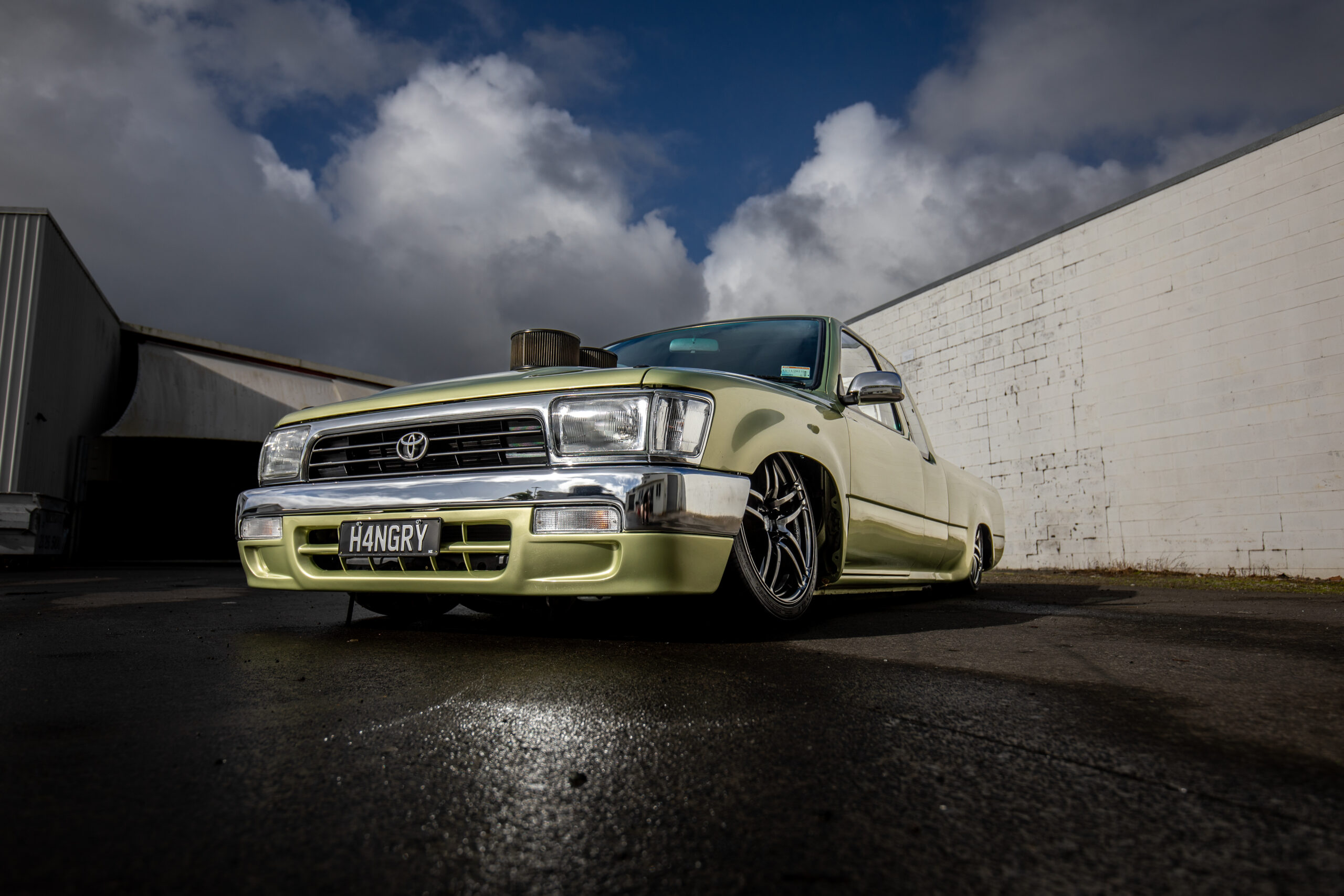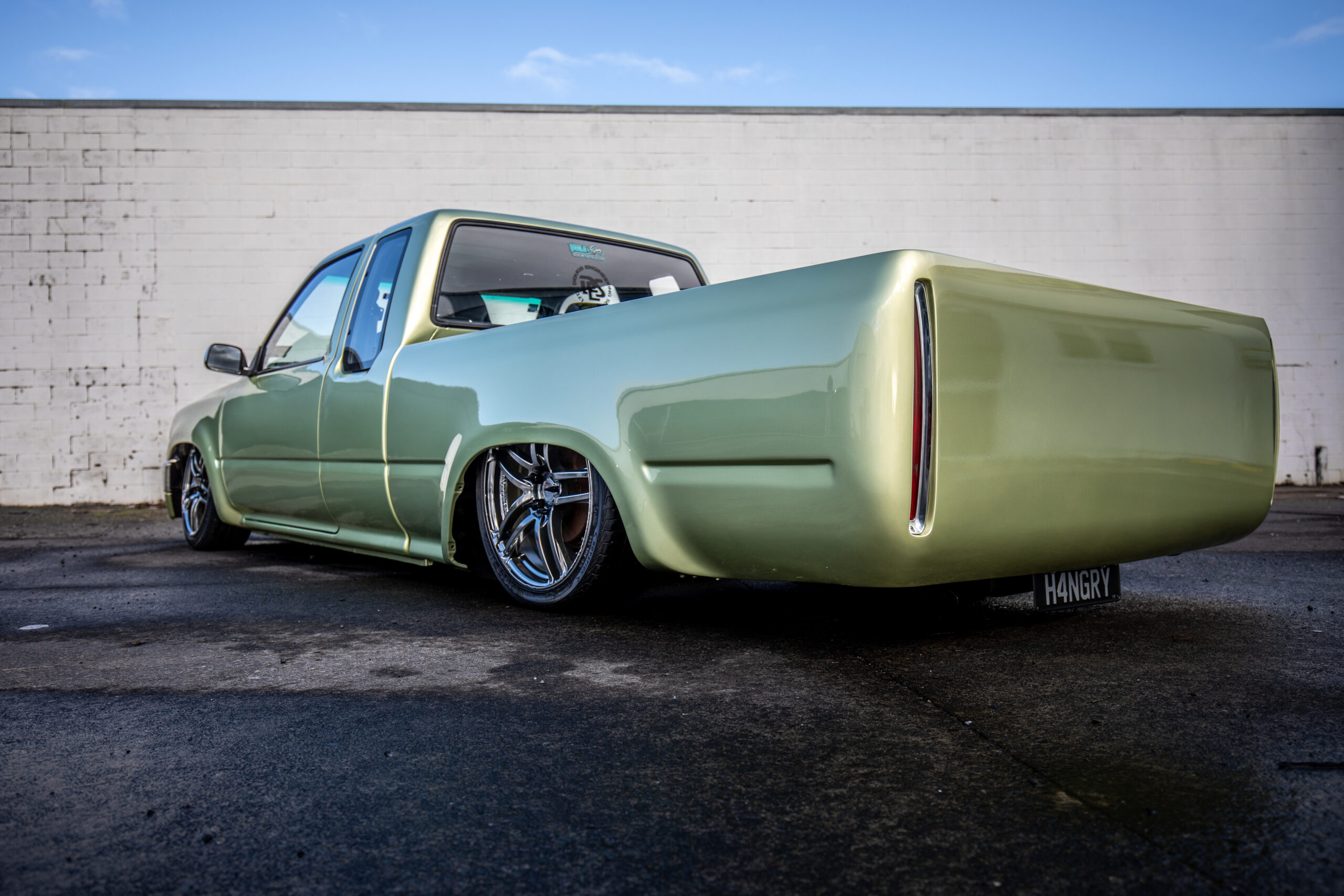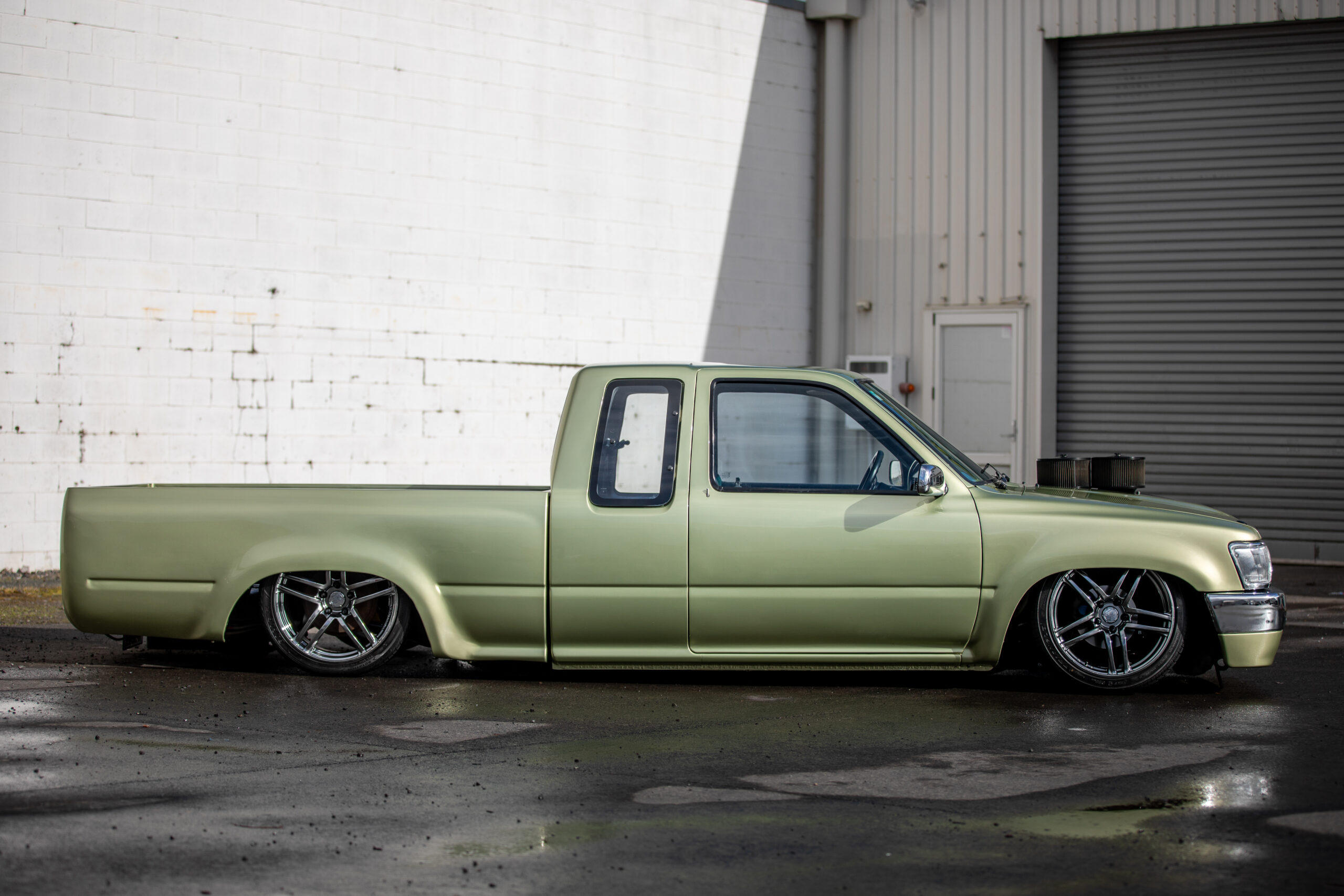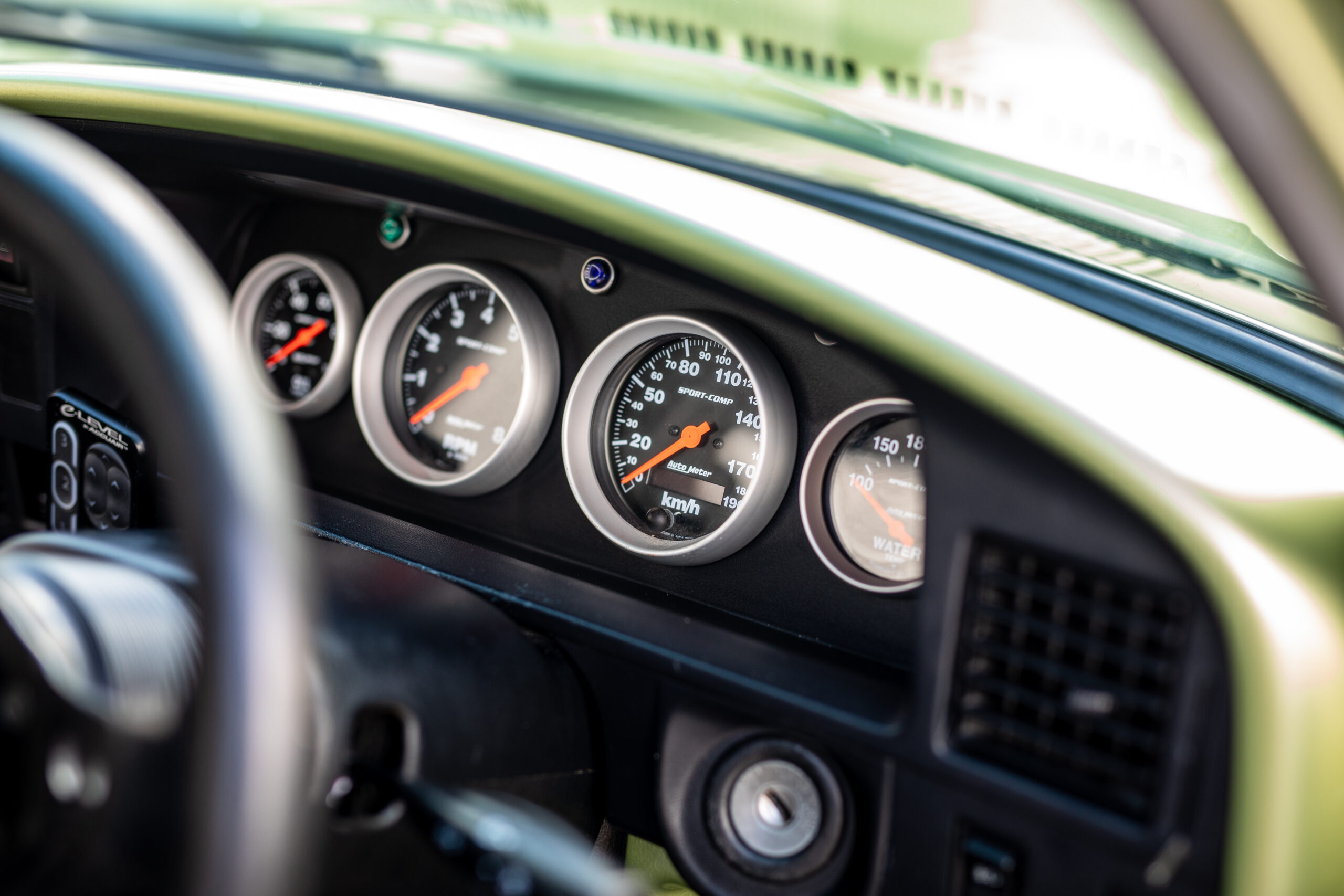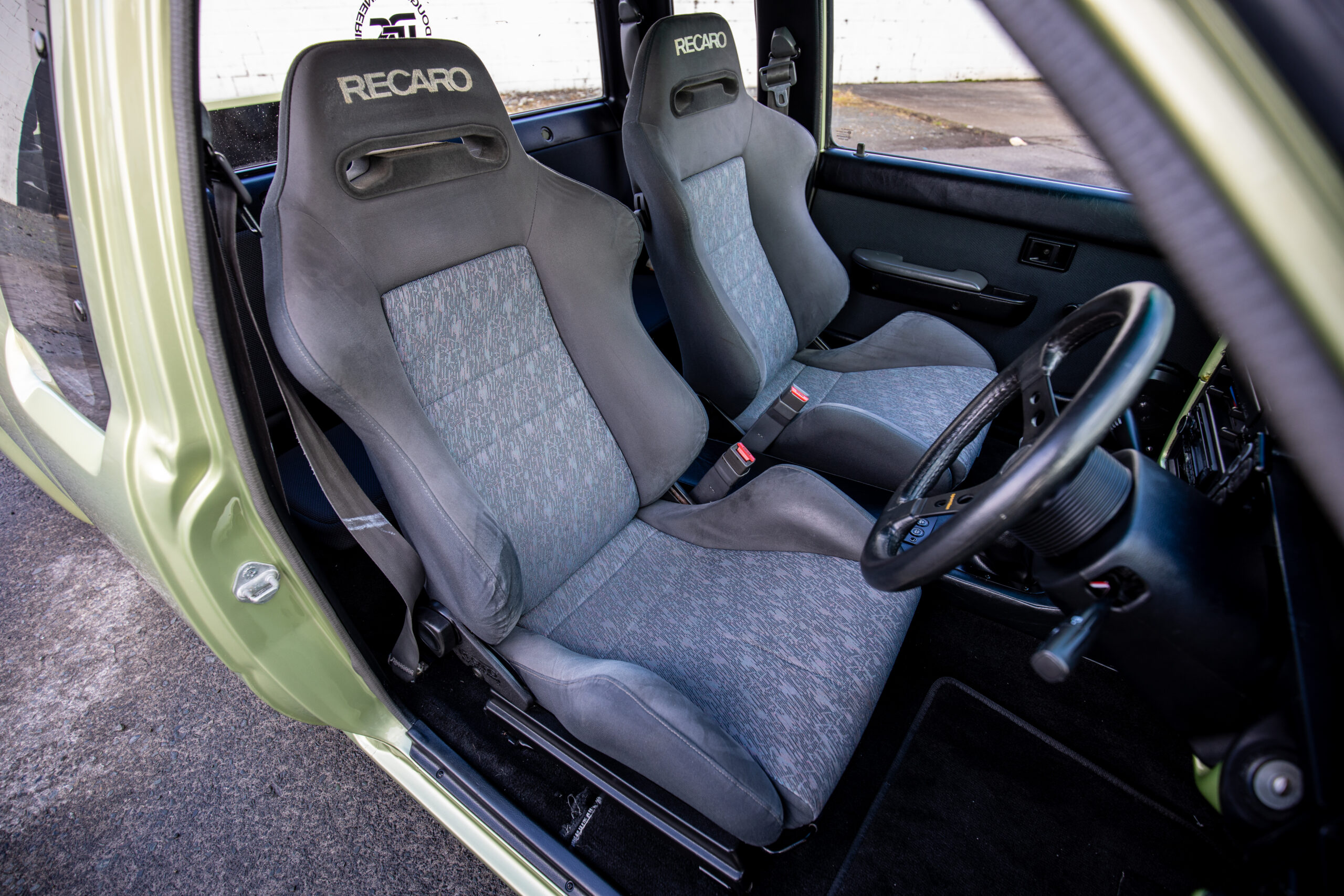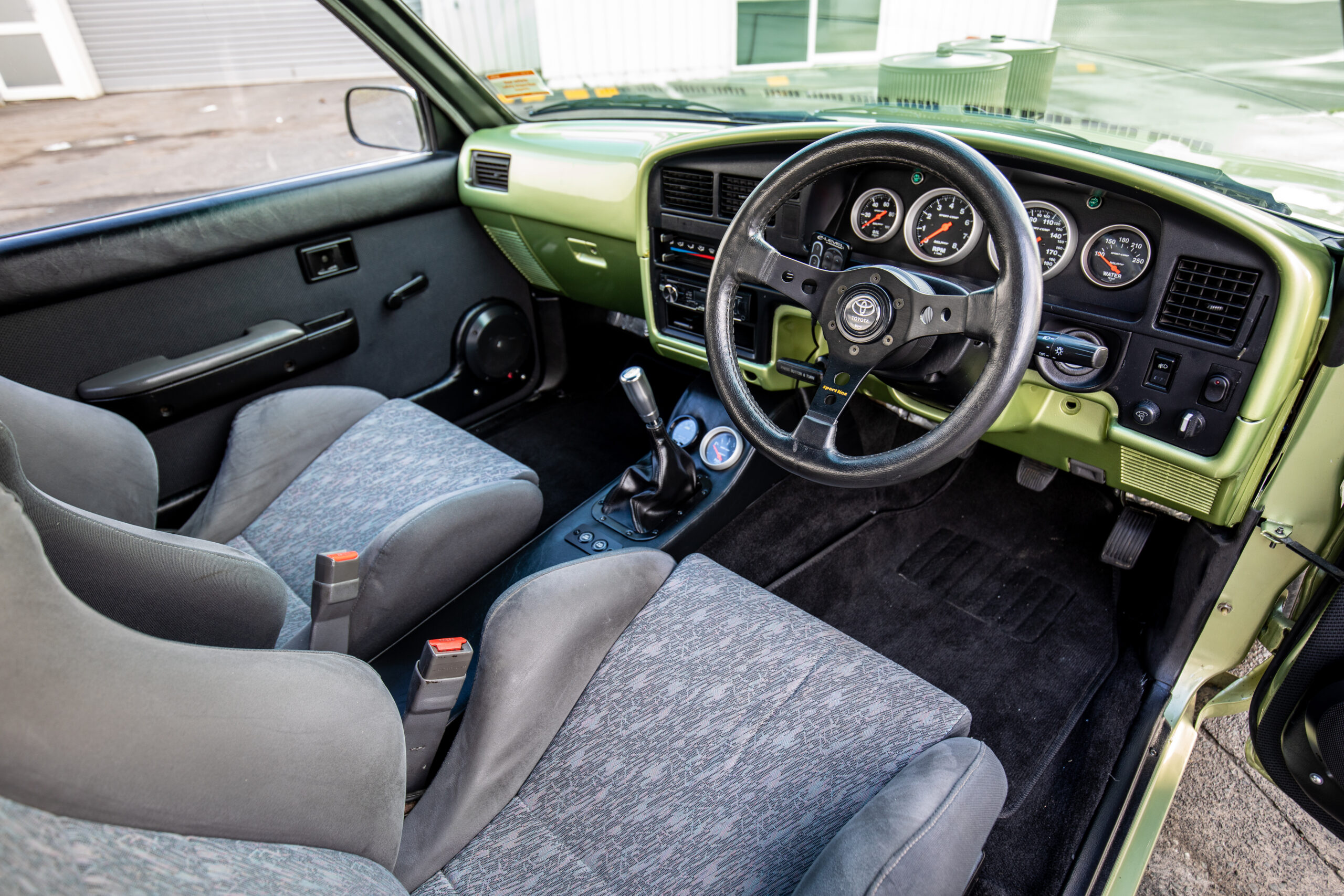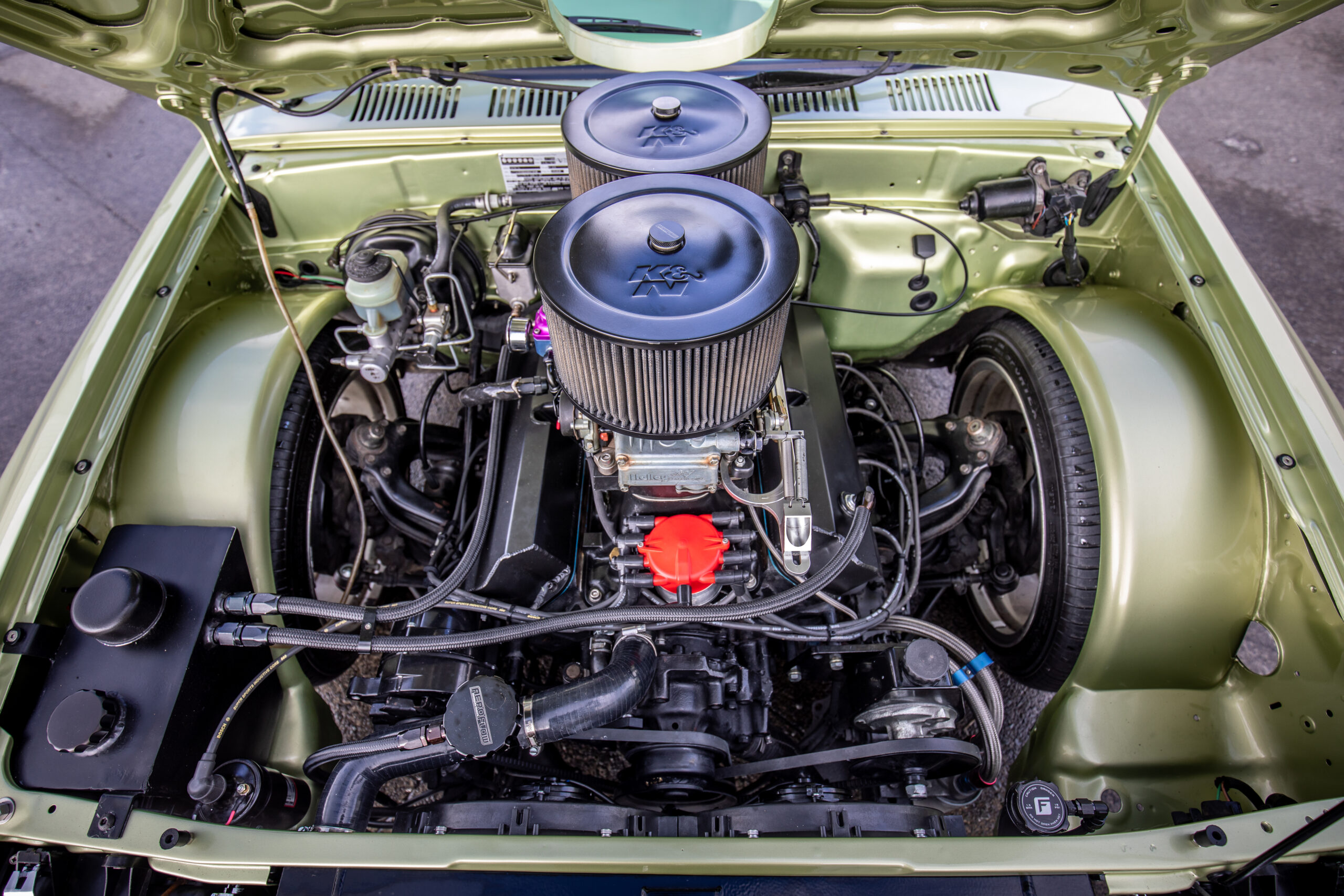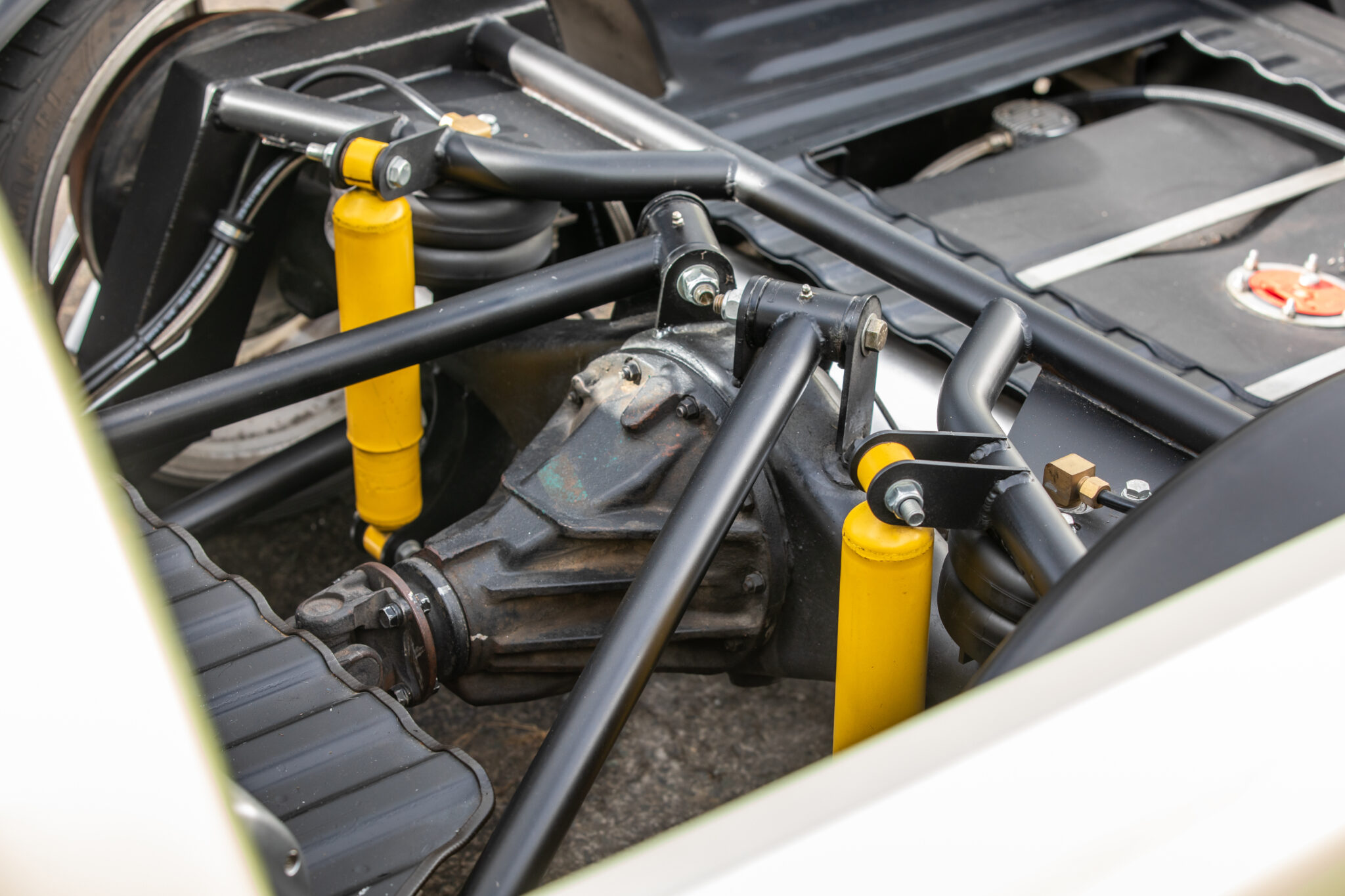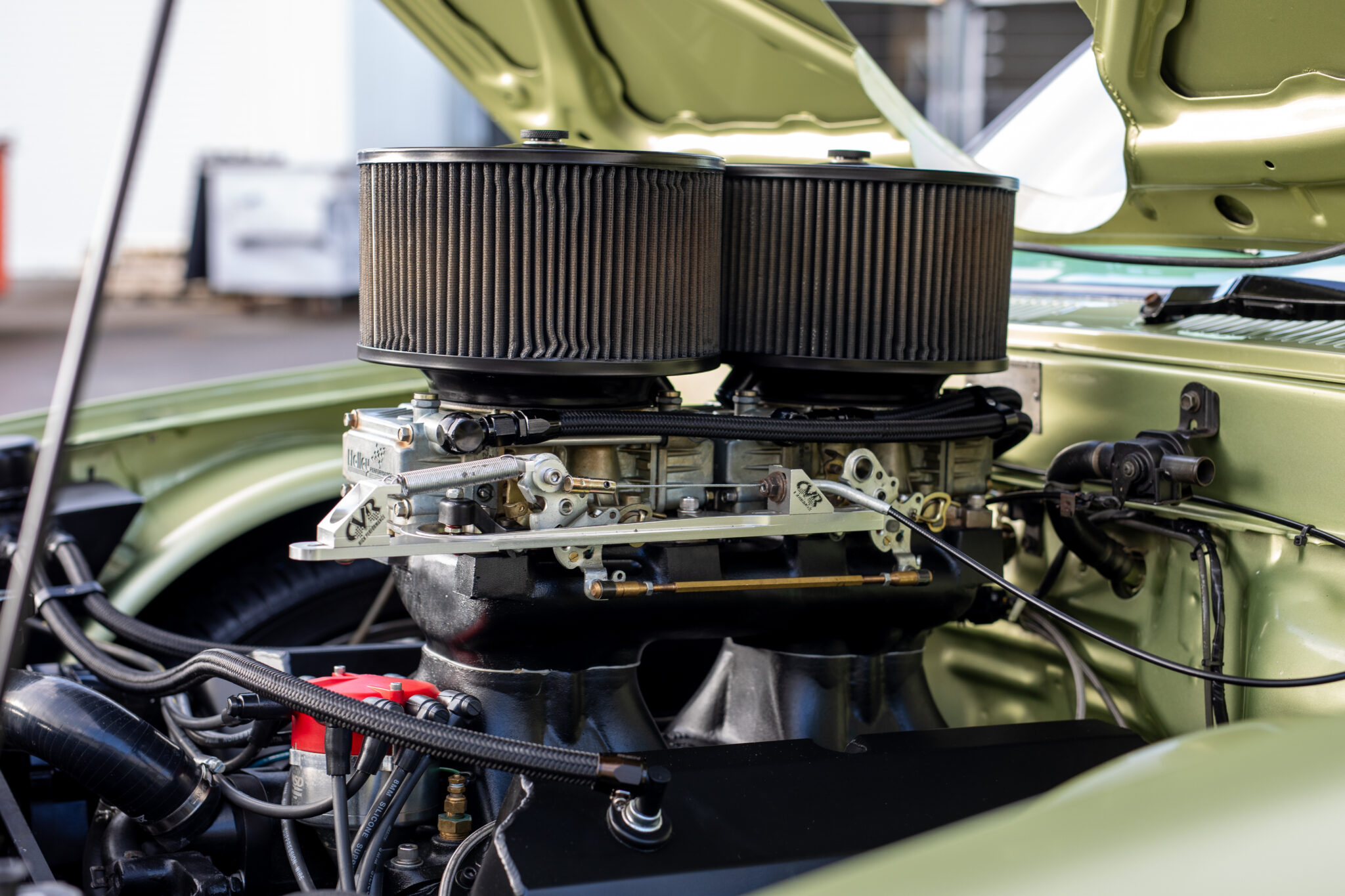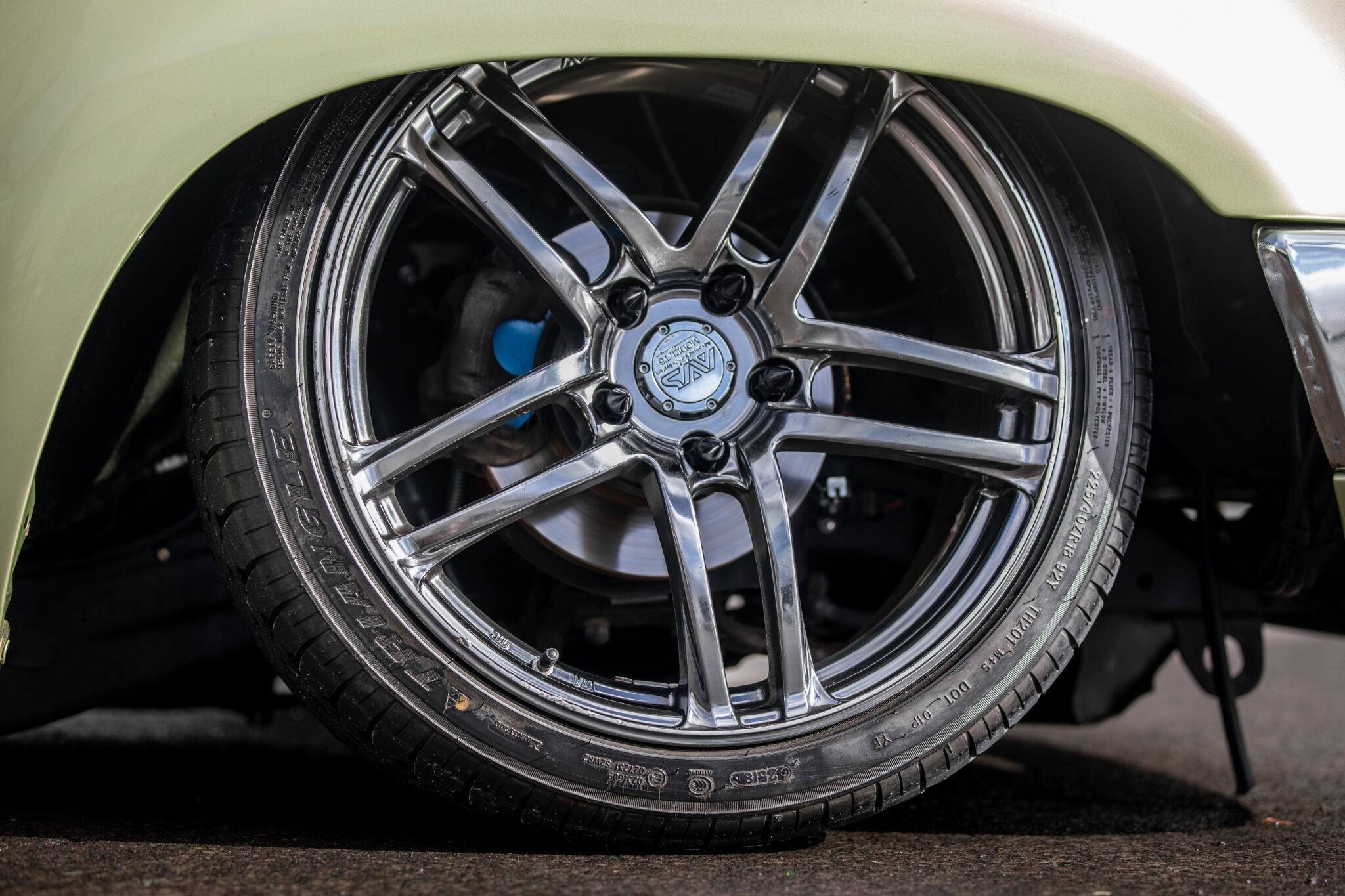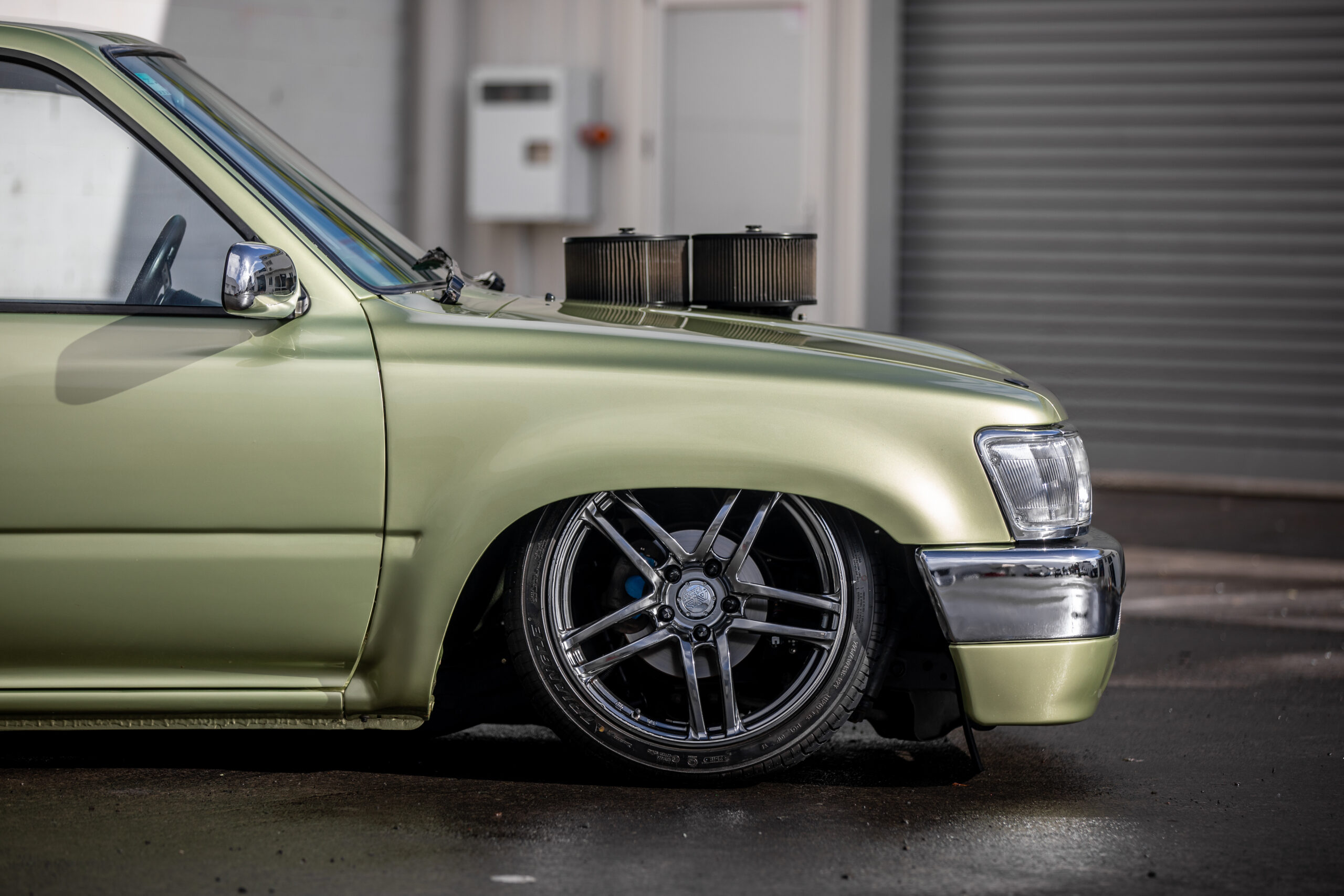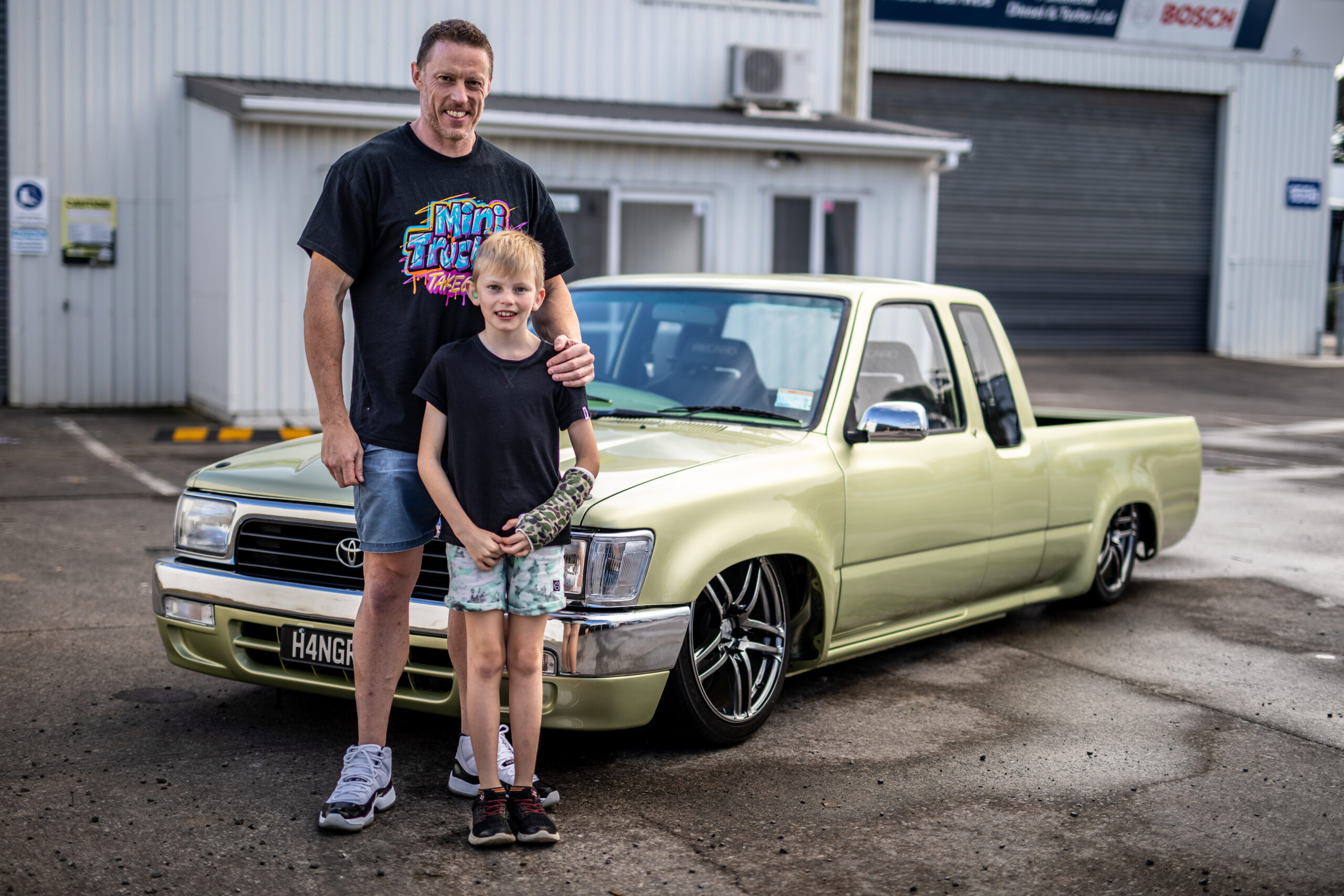Words: Simon Dudding Photos: Glen McNamara
Like grandad’s axe, Damien’s 1992 Toyota Hilux has little remaining that could be considered an untouched factory Toyota component. Although the Toyota parts bin has been well used for various donor parts, there are an equal number of fabricated and modified elements to this custom mini-truck. It is as you’d expect from 20 years of ownership and continuous development, integrating new ideas with three distinct periods when you could have earmarked the build as being completed. Much like grandad’s axe, the changing tastes and ideas for development of H4NGRY is what drives Damien to continue after all these years.
The dream started with the American mini-truck scene in the 1990s, a time well before the advent of YouTube and reality TV hot rod build shows. So where do you get inspiration from pre-internet? Luckily New Zealand at the time had a huge spread of magazines from the USA and local titles and were also plentiful. Mini-trucking was becoming hugely popular in the United States with modifying Japanese origin utes alongside small-sized American pickups, dubbed LUV trucks, or light utility vehicles.
The mini-truck magazines from that period are something that Damien still cherishes and he has a horde of well- thumbed mags still in his possession. It’s fairly remarkable, considering Damien has lived overseas on two occasions and these things are usually the first on the chopping block. The USA magazines featured all of the show stoppers of the time and the local scene continued to develop too. The 4 & Rotary Nationals and Auto Salon during the early 2000s really helped to gain some popularity with the mini-truck scene. Builds became really wild with modifications that really started to leave no stone unturned.
This was enough inspiration to get started as Damien parted ways with the turbo Mazdas and Mitsubishis, as many of us do when we grow up. Don’t hate me for saying it, but there seems to be a trend here, as like many others he decided that a V8 ute was in order. This was also after some arm twisting by Damien’s father Doug and a few of the other lads that worked at Doug’s Engineering in Pukekohe. At the time of the initial build, many 4WD utes received V8 engine swaps for performance and the modification was fairly common before turbo technology was developed to get big power out of diesel engines.
The engineering shop had a few of these V8 4WDs kicking around at the time, so it was an easy choice made even easier with Doug having a potential engine sitting in the garage. The small block 302 Ford Windsor was suggested as a good choice as the narrow angle of opposing cylinders makes swapping into narrow chassis rails much easier — pretty much the opposite of the late model Ford Coyote engine that has trouble fitting in anything not specifically designed for it. With enough of a plan formulated and a pile of magazines for inspiration, it was time to find a suitable ute to start modifying. A long search ensued for the desired extra-cab model but as luck would have it a slightly modified Hilux came up for sale in 2003. The extra cab already had a set of wider 4WD model front guards fitted and had been lowered, but otherwise it was as the factory had delivered it. In any case, it was a good sound truck for a starting point.
The 302ci Windsor V8 was pieced together with sensible upgrades to make this a good cruiser with enough performance to keep it a fun drive. Being a mini-truck first, the intended purpose didn’t require oodles of performance. The factory cylinder heads were treated to a mild port job and new upgraded valve train components. These subtle upgrades were a good choice considering what lay ahead for the air intake but for the most part the intake was fairly factory to begin with.
The bottom end was rebuilt with new pistons and rods with an overbore to clean up the cylinder walls, which actually makes this Windsor 306 cubic inches. The better cylinder sealing probably does more for performance than the extra four cubic inches of displacement. The sump was custom made to clear the cross member along with custom engine mounts. The downside of creating something uncommon is that you come across issues that don’t have an off-the- shelf solution. Maybe that’s an upside of being different though, as this mini-truck is anything but off the shelf.
The bellhousing was modified to adapt from the Windsor power unit and pleasing noise maker to the factory Toyota transmission. The Toyota transmissions have had a fairly good run behind V8s over the years, due to being over-built for their application, and fairly reliable at holding onto a modest amount of horsepower without breaking. With that being said, the factory one broke, along with a few clutches along the way.
Being an ex-Mitsubishi Evolution owner, Damien probably knows a fair amount about breaking transmissions though. Luckily Toyotas are built like Lego, where it is easy to mix and match components without requiring further modification for fitment. A stronger, and not broken W57 model Toyota gearbox was sourced and fitted with a beefier Tilton clutch. This combo has worked well to date and been a lot more reliable. The W57 also has the benefit of being closer in ratio between gears from one to four while still being overdriven in fifth. This helps immensely with cruising as the standard Hilux differential remains in place, albeit having been rebuilt with a 3.7-1 ratio gear set.
The engine and transmission swap was certified and round one of modifications was completed. The Toyota was driven until the classic Kiwi right of passage called. Damien packed up and went off to live in the United Kingdom and explore Europe for a few years with the Toyota destined to sit waiting in storage. On Damien’s return it was straight back to modifications! Finding an Australian-based Hilux with the perfect hue of green was enough for Damien to decide it was time for body and paint modifications. The paint colour follows the origin of the engine, being a factory Ford zest green colour.
This is also when the majority of the body modifications took place. The front end was replaced with mostly Toyota Hilux Surf factory items to give it further subtle changes. As the body work moves rearward, it becomes less subtle. Door handles, side indicators, and aerial were shaved and smoothed. The tray was where things got really serious as the tail gate was integrated, tray smoothed, roll pan added, and Cadillac tail lights frenched in. In the mini-truck culture there are lots of throw back body styling techniques to traditional hot rodding. The culture embraces the body work tricks and just adds a modern twist to classic hot rodding concepts of modification. With the body sorted out and acceptably mini-trucked, the interior was seen to at the same time.
The cab was treated to a set of factory Mitsubishi Evolution Recaro seats with new carpet and headlining. The diminutive rear seat was retrimmed, and the dash painted green to flow into the exterior. Good enough for the completion of round two modifications. The Toyota was pedalled around south Auckland for a few years before being returned to storage for another overseas excursion. This time it was Sydney and was a lot closer for Damien to return home after a few years. This return to New Zealand set in motion another set of modifications in 2018.
The engine had the tunnel ram added making the most of the original cylinder head and valve train upgrades, and then the Toyota was sent to Get Low Customs where it got the works on the suspension set up. Simon at Get Low Customs did a great job C notching the chassis and modifying the front suspension arms to accept the air bag system that really does slam the sills to the ground. Extra body modifications allow the Hilux to sit this low with modified wheel tubs and custom shock absorbers.
The truck was driven around until an incident took it off the road once more. It could possibly have been due to the extra power of the tunnel ram, but who can say? Either way the body required some repairs and as the initial build was completed some time ago, the rest of the paint work was also due for a birthday and tidy up. There were some other minor issues that were destined to be sorted out once and for all too.
The factory radiator was ditched for a custom fitted higher capacity unit by Fenix Radiators for better efficiency and moved forward while the front end was being repaired. This allowed more room up front and fans were incorporated into the shroud to tidy things up and keep the Windsor cool when cruising slow laps. Pete at Custom Chambers was called on and worked his magic with a full exhaust system with headers tucked inside the narrow chassis rails.
This freed up a few more horsepower and made the V8 come alive with a pleasant burble on idle. The dash was modified with a very neat Autometer cluster to complete the custom interior look. The body work was completed and paint tidied up to complete the last round of modifications. The end result is what we have on these pages.
The plan from here on out is to attend shows and drive the wheels off the Hilux. It’s been a long haul and keeping ownership of the mini-truck while being overseas for extended periods shows the dedication to the Toyota. The old inspirational magazines are still piled up in the garage, so there’s probably a few more modifications on the cards for the Hilux yet.
_______________________________________________________________________________________________________
This article originally appeared in NZV8 issue 217





